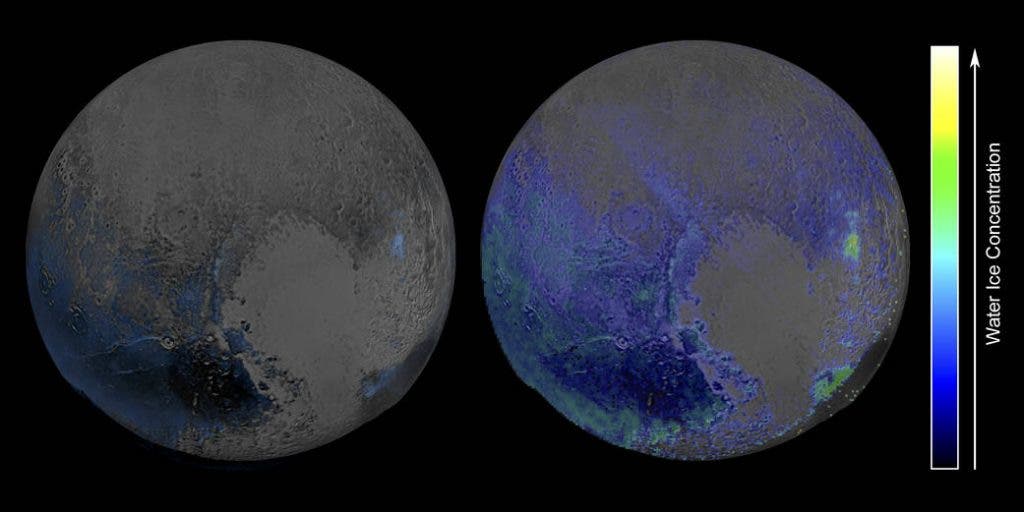New data provided by the New Horizons mission showed that water ice on Pluto is much more common than we thought.
Pluto turned out to be full of surprises. Not only does it have a thin atmosphere and is geologically active, but also hosts vast quantities of frozen water. The false color image above was derived from observations done with the Ralph/Linear Etalon Imaging Spectral Array (LEISA) instrument aboard New Horizons and shows where water is abundant.
According to this data, water seems to be considerably more widespread across Pluto’s surface than was previously known. Previous findings were deemed inaccurate because while they did detect ice, methane ice often masked water ice. The much more sensitive method used on the right involves modeling the contributions of Pluto’s various ices all together. This method has its own limitations in that it only highlights ices included in the model, but the model is constantly finessed.
“Water ice is Pluto’s crustal “bedrock,” the canvas on which its more volatile ices paint their seasonally changing patterns. Initial New Horizons maps of Pluto’s water ice bedrock compared LEISA spectra with a pure water ice template spectrum, resulting in the map at left,” NASA wrote.
Interestingly though, the data revealed little or no ice in the area called Sputnik Planum (the left or western region of Pluto’s “heart”) and Lowell Regio (far north on the encounter hemisphere). This could mean either that there is no water there, or that it is hidden beneath a thick blanket of methane ice (or something else). Sputnik Planum is a 1000-km-wide plain of frozen nitrogen and carbon monoxide ices, divided into polygonal cells which astronomers believe to act like convection cells.
Credits: NASA/JHUIAPL/SwRI










